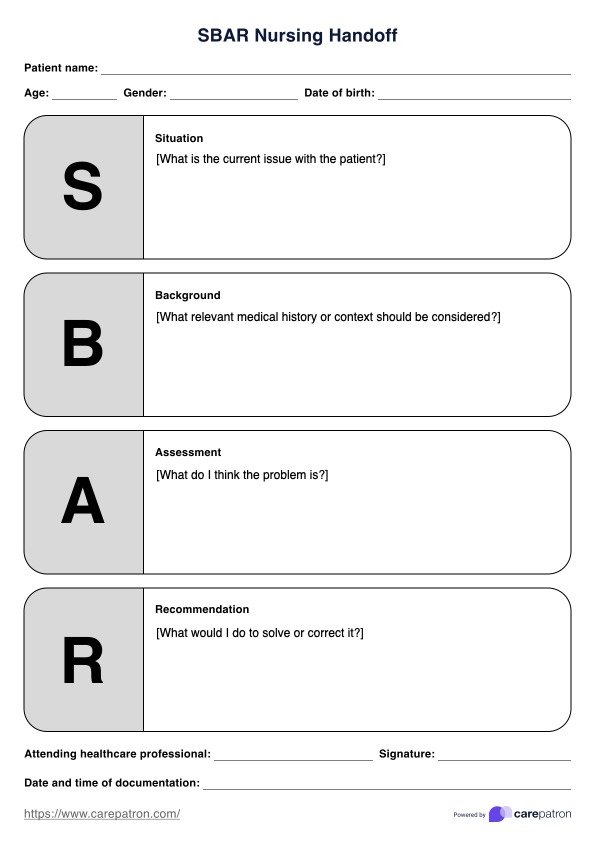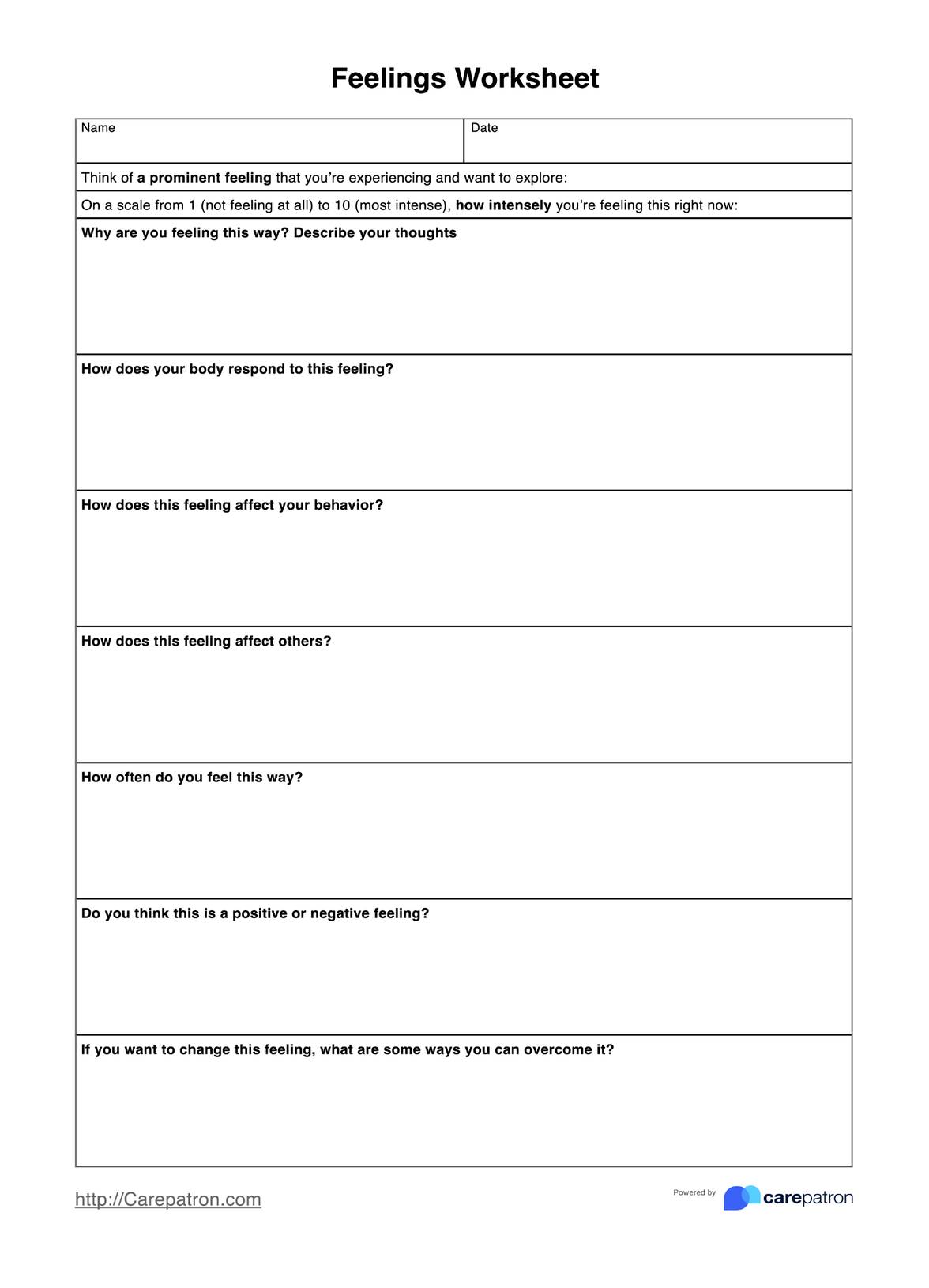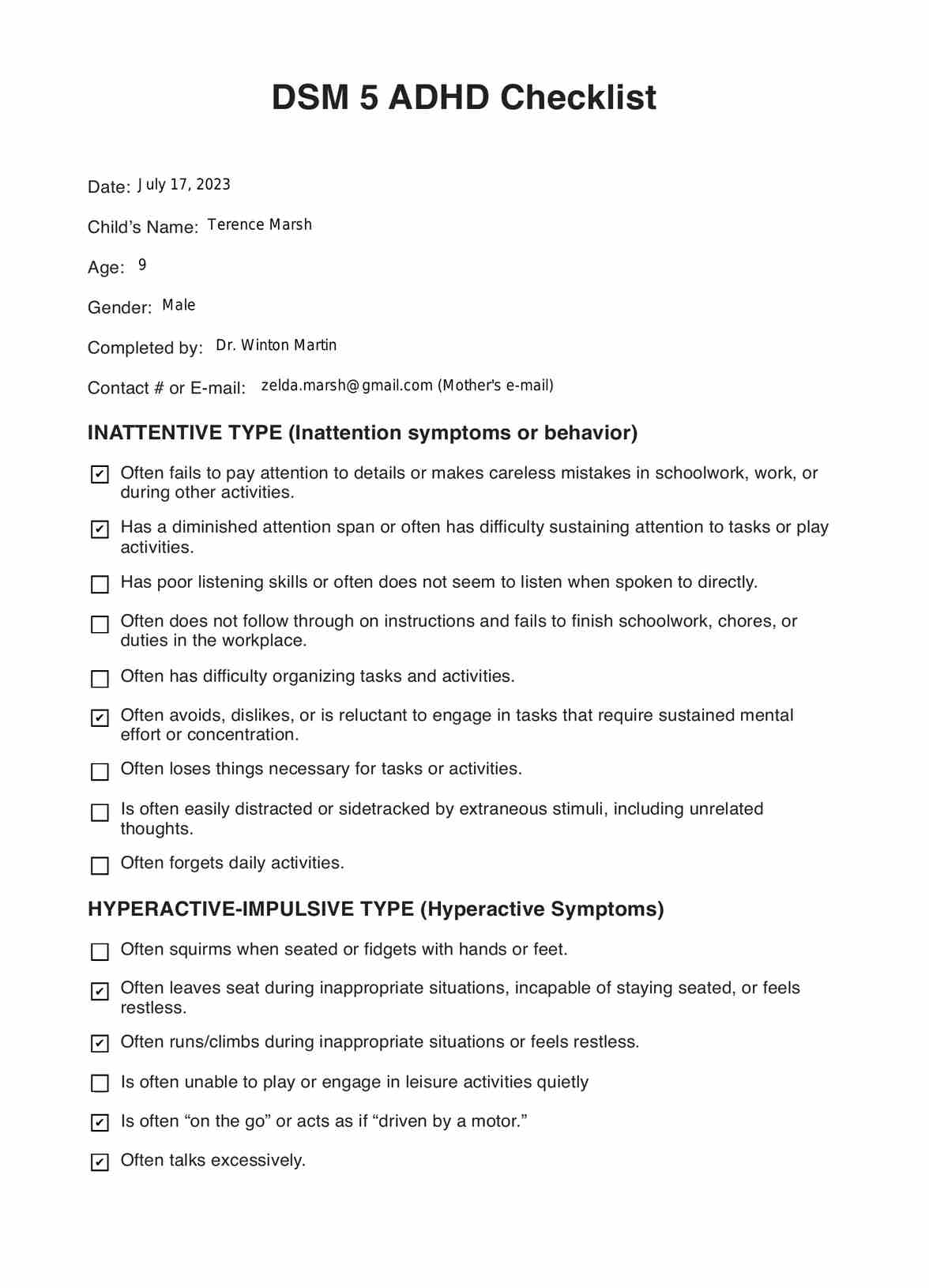Autism pattern recognition test
Explore the Autism Pattern Recognition Test to understand pattern recognition in autism. Access a free PDF for your clinical practice.


Pattern recognition in autism
Autism spectrum disorder (ASD) is a complex and diverse condition, both genetically and phenotypically. This heterogeneity has made it challenging to define, recognize, and treat. According to Crespi (2021), many of the traits associated with autism can be understood through the concept of "pattern." Individuals with autism spectrum disorders often exhibit enhanced abilities in pattern perception, recognition, and processing. These skills allow autistic individuals to identify patterns in various contexts more easily than their neurotypical peers. However, this heightened pattern recognition can also contribute to restricted interests and repetitive behaviors (RRBs), core traits of autism spectrum disorder.
The concept of pattern recognition in autism not only helps in understanding these autistic traits but also guides the development of personalized therapies. By recognizing patterns in both social and non-social contexts, we can better tailor interventions to support the unique neurological and cognitive functions of those on the autism spectrum. This approach highlights the importance of further research into how autistic individuals tend to perceive and engage with the world around them.
Autism pattern recognition test Template
Autism pattern recognition test Example
How to use our Pattern Recognition Test
Before delving into the template, remember that the client can respond based on their instincts, and there are no right or wrong answers. To get you started, here's a step-by-step guide to use the template:
Access the test template
You can easily access the Pattern Recognition Test template directly from this guide. Simply download the template, which includes detailed instructions, ensuring you have everything needed to conduct the assessment with your patient.
Introduce the test to the patient
Before starting, it’s important to introduce the test to the patient in a calm and reassuring manner. Explain that the test is designed to help understand how they recognize patterns, a key cognitive skill, and ensure they feel comfortable and supported throughout the process.
Educate the patient about the test
Take a moment to educate the patient about the test’s purpose and what it entails. Provide clear and simple explanations, emphasizing that the test is not about right or wrong answers but rather about understanding their unique cognitive abilities related to pattern recognition.
Gather results
Once the test is completed, carefully gather and record the results. Pay close attention to the patient’s responses, as these insights are crucial for identifying specific patterns in their cognitive processes, which can guide further assessments and interventions.
Provide support and next steps
After analyzing the results, provide the patient with feedback and discuss the next steps. Offer support by explaining what the results indicate and how they will be used to tailor further care, ensuring the patient understands the importance of this assessment in their overall treatment plan.
Note that this test is not directly linked to autism and should NOT be considered diagnostic criteria for any particular condition.
Benefits of using our free Pattern Recognition Test
Discover the myriad benefits of using our free Pattern Recognition Test, which is designed to support individuals on the autism spectrum and those working in developmental social cognitive neuroscience.
Fully digital
Our test provides a seamless, fully digital experience, eliminating the need for paperwork or manual scoring. Access it conveniently from any device with an internet connection, ensuring flexibility and accessibility for individuals with autism spectrum disorders and those assessing autistic traits.
User-friendly interface
The test features a user-friendly interface, designed to be easy to navigate and comprehend. Clear instructions and an intuitive layout allow participants, including autistic children and adults, to focus on recognizing patterns without unnecessary complexities, making it suitable for various cognitive abilities.
Customizable to individual pacing
Tailor the testing experience to individual pacing. The test is structured to allow participants, including those with autism spectrum disorder, to progress through sections comfortably. This promotes a stress-free and engaging assessment process, accommodating diverse cognitive needs and minimizing the impact of pervasive developmental disorders.
Insights into cognitive abilities
Gain valuable insights into cognitive abilities related to pattern recognition. The test explores diverse scenarios, offering a comprehensive view of strengths and unique thought patterns. This fosters a deeper understanding of cognitive processes in those with autistic spectrum disorders, contributing to more personalized care.
Encourages self-reflection
The Pattern Recognition Test encourages self-reflection, especially in those with autism spectrum disorders. As participants navigate patterns, they can reflect on their problem-solving approaches and repetitive thought patterns, contributing to personal growth and awareness of their cognitive strategies within the broader context of pattern perception.
Other pattern recognition exercises
Pattern recognition exercises enhance cognitive abilities, problem-solving skills, and creative thinking. Here are some additional patterns recognition exercises that practitioners can utilize with their clients:
Number and sequence patterns
Present sequences of numbers or mathematical operations and challenge clients to identify the pattern or rule governing the sequence. For individuals with autism spectrum disorder, these exercises can help strengthen pattern perception and cognitive skills. Incorporate sequences with missing elements for clients to determine based on the established pattern, aiding in the recognition of repetitive thought patterns.
Word and language patterns
Use puzzles like anagrams, word searches, or word associations to explore linguistic patterns. Encourage clients to identify patterns such as rhymes, synonyms, antonyms, and word families. These exercises are particularly beneficial for autistic children, helping them recognize patterns in sequences of letters or words, which can contribute to language development and understanding of autistic traits.
Pattern recognition games
Engage clients with board games where players match cards based on shared attributes like color, shape, or pattern. These games are a fun and effective way to enhance pattern recognition skills, particularly for those on the autism spectrum, by integrating cognitive challenges with enjoyable activities.
Reference
Crespi, B. (2021). Pattern Unifies Autism. Frontiers in Psychiatry, 12. https://doi.org/10.3389/fpsyt.2021.621659
Commonly asked questions
While the Autism Pattern Recognition Test provides valuable insights into pattern recognition abilities, it is not a diagnostic tool for autism spectrum disorder. It should be used as part of a broader assessment conducted by a healthcare professional.
Yes, the Autism Pattern Recognition Test is suitable for children, particularly those on the autism spectrum. It is designed to be accessible and engaging, making it an effective tool for assessing pattern recognition in younger individuals.
People with autism often possess excellent pattern-recognition skills. This is because their brains are wired differently, making them more sensitive to subtle details and patterns that might go unnoticed by neurotypical individuals. However, it's important to note that this is not always the case for all people with autism, and their pattern recognition abilities can vary greatly.


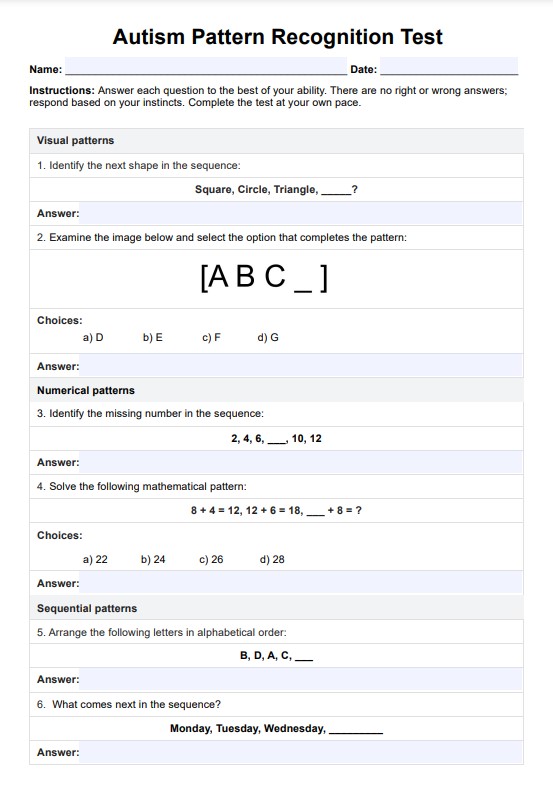
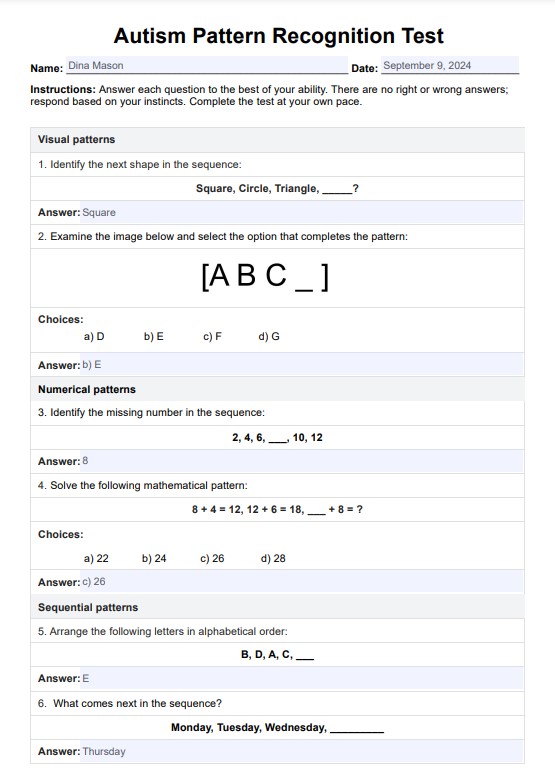





















-template.jpg)














































































